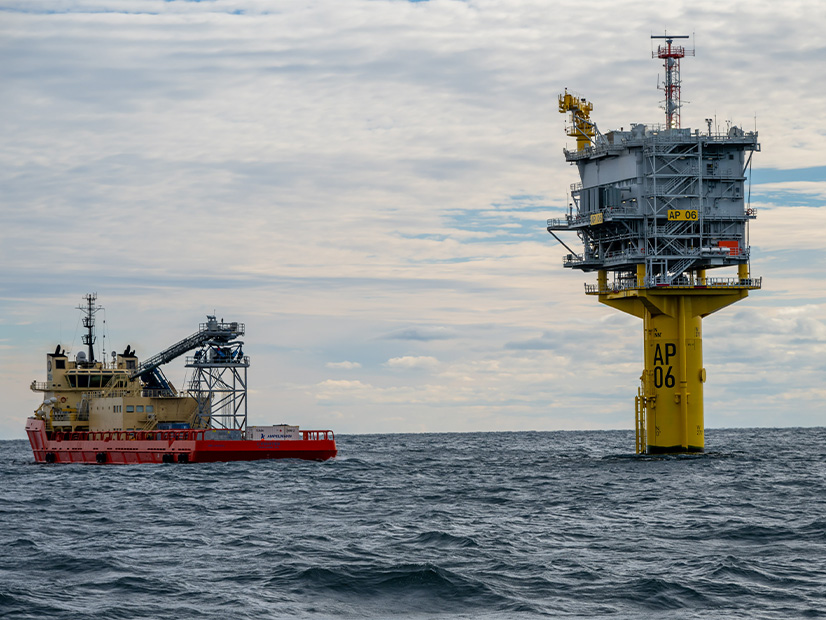
The world’s leading offshore wind developer announced it is pulling out of some smaller markets but reiterated its commitment to construction and operation in U.S. waters.
In its 2023 earnings report, issued Feb. 7, Ørsted also downgraded its growth projection, announced hundreds of job cuts and said its bottom line was a $2.91 billion net loss in 2023. More than $1 billion of the loss was because of offshore wind project cancellation costs.
Much of the fiscal distress stems from Ørsted’s troubles in the northeastern United States.
In late 2023, it became the first developer to cancel a major, mature U.S. project when it spiked Ocean Wind 1 and 2 and took billions in impairments.
In early 2024, it canceled the Maryland offtake contract for Skipjack Wind and moved to cancel the New York offtake contract for Sunrise Wind, resulting in additional costs and delays. But it continues to develop both projects and is seeking a new contract for Sunrise.
The developments prompted Ørsted to undertake a comprehensive offshore portfolio review, the results of which were reflected in Feb. 7’s announcements.
The board of directors set a goal of 35-38 GW of installed offshore capacity by 2030; it now has approximately 23 GW installed, and previously had aspired to reach 50 GW by 2030.
The challenges of 2023 also led Ørsted to suspended stock dividends for fiscal years 2023-25 and report a $2.91 billion loss in 2023, compared with a $2.17 billion profit in 2022.
It remains committed to the U.S. offshore wind sector, particularly off the Northeast coast, but will exit the market in Norway, Spain and Portugal; will deprioritize development in Japan; and is planning to trim development efforts in floating wind and P2X — the use of offshore wind energy to generate other forms of energy, such as green hydrogen.
As a result, the company expects to reduce its global workforce by 600 to 800 people.
Looking forward, Ørsted said it’s exploring options for divesting the federal leases off the New Jersey coast for the Ocean Wind projects.
The company said it is revising its project operating model to include better contingency planning, with more proactive planning for backup supply chain capacity; securing all critical local permits before making a final investment decision; ensuring greater flexibility on project timelines and commissioning dates; and conducting more reviews of projects as they progress, both by internal peers and external sources.
Other Financials
Other companies in the offshore wind space also have released financial results in the past week. The reports have provided additional insight into the problems the sector is facing.
For example, in its fourth-quarter/full-year earnings call Jan. 23, General Electric placed its 2023 offshore wind loss at roughly $1.1 billion.
In its 10-K filing Feb. 2, General Electric predicted global growth in the offshore wind industry in coming decades but near-term challenges due to companies trying to increase output and reduce cost.
For its own offshore business, GE said it continues to experience pressure related to product and project cost estimates. It’s attempting to counter this, but timeline changes and other adverse developments could result in further losses beyond what it currently estimates.
For the year ending Dec. 31, offshore project losses increased by $400 million, GE said, and launching or ramping up new platforms such as the Haliade-X offshore wind turbine will create additional operational risks.
In other reports:
-
- Equinor said Feb. 7 its net income dropped 59% from $28.74 billion in 2022 to $11.9 billion in 2023. Its renewables sector recorded a $757 million net loss in 2023, compared with an $84 million net loss in 2022, which it attributed in part to the $300 million third-quarter impairment it took on its U.S. Northeast offshore wind projects, as well as higher development and operating costs elsewhere.
- Bp took a $600 million pretax impairment charge in the fourth quarter of 2023 because of restructuring of its U.S. projects, raising the full-year cost to $1.14 billion. Bp and Equinor are dissolving their offshore partnership, which had four separate wind farms in development. They have terminated the New York offtake contracts for Empire Wind 2 and Beacon Wind 1 and effectively terminated the contract for Empire Wind 1.
- Siemens Energy issued its first-quarter 2024 report Feb. 7, titling the release “Solid start to the year, turnaround of wind business remains focus.” But that referred to onshore wind, where Siemens has run into quality control problems. The company said orders were slightly higher but revenue lower in the offshore business in the first quarter of 2024 compared with 2023 amid rising product costs and ramp-up challenges.
- Vestas said Feb. 7 that it returned to profitability in 2023 and recorded a record order intake — 18.4 GW — in both onshore and offshore equipment, especially in the U.S. 2023 offshore revenue was down from 2022 but that was more than offset by onshore increases. Looking forward, it expects the offshore market to show a compound annual growth rate of 20 to 25% in 2023-30, with growth accelerating after 2025. That is a downgrade from a year earlier, when Vestas predicted 35 to 40% growth from 2022-25.
